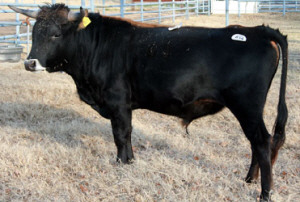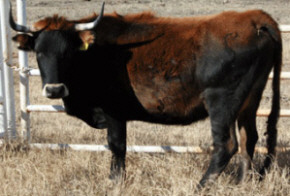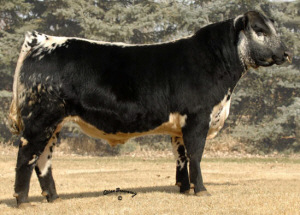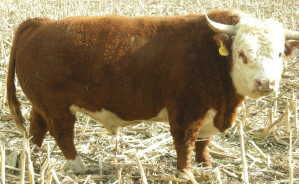



Corriente
History
The Corriente can be traced back to the first cattle brought to the new world by the Spanish as early as 1493. These cattle were hardy breeds chosen especially to withstand the ocean crossing and adapt to their new land. They were brought to the West Indies and south Florida, as well as Central and South America. Over the centuries the descendants of these cattle were bred for different purposes - milk, meat and draft animals. Photo courtesy of Jandal Corrientes, www.jandalcorrientes.com |
In the early 1800's, European and other breeds were introduced to the new world, and by the 1900's many ranchers in the Americas were upgrading their herds with modern beef cattle. From this introduction of many new breeds, pure descendants of the original Spanish cattle almost disappeared, but some survived with little human care or intervention in remote areas of Central and South America, and in very limited numbers in some areas of the southern U.S.
Today there is evidence of a worldwide growing interest in preserving various strains of these hardy, native cattle.
The name "Corriente": In Central and South America, the various descendants of the early Spanish cattle are generally referred to as "Criollo." In parts of northern Mexico, they are often called "Corriente", although this term is frequently used for any small cattle of indiscriminate breeding and not just for the type of cattle recognised by the N.A.C.A. "Corriente" became the most common term used at the border to refer to the cattle purchased for rodeo use. Consequently, most North American cattlemen, ropers and doggers know this name, and it was chosen by the founders of the N.A.C.A. to be used for this registry.
John E. Rouse, in his book, World Cattle, Vol. III, Cattle of North America, explains the names used in Mexico. "Descendants of the original Spanish cattle, little influenced by modern breeds, are now seen only in the remote parts of the country. These are generally known as Criollo cattle, although in the state of Sonora the term Corriente is more common, and in Baja California the word Chinampo is used. All these terms, meaning "common cattle" or "cattle of the country" are applied to more or less pure descendants of the Spanish cattle, as well as to the indiscriminate mixtures of these and more recently introduced breeds."
In Florida, the few remaining small, native cattle - cousins of the Mexican Corriente are called Scrub cattle or Cracker cattle, and similar cattle in Louisiana are called Swamp cattle.
Characteristics
Corriente cattle are narrow and fine in conformation compared to other beef breeds, their head neck and forequarters and hindquarters are well balanced. Photo courtesy of Jandal Corrientes, www.jandalcorrientes.com |
A mature bull can weigh up to 1000 lbs and a mature cow up to 800 lbs, the yearling bulls or steers are around 400 lbs.
This breed are used in rodeo's, in roping and bulldogging competitions and are judged on their stamina, strength and qualities of their performance.
Statistics
Comparative
Distribution
Today there is evidence of a worldwide growing interest in preserving various strains of these hardy, native cattle. Cattle associations in the United States, Spain, South America and Florida are making efforts to recognise their attributes.References (the above information was cited from the following sites)
www.corrientecattle.org
www.jandalcorrientes.com


